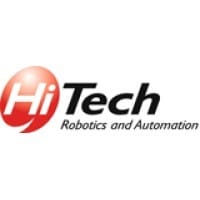Basics of an EOT
An EOT is a trust that acquires shares in a company which are then held on behalf of the employees. It is an increasingly popular exit strategy for shareholders which offers attractive tax incentives and peace of mind over the future of the business and its employees.
How is the acquisition financed?
The acquisition is funded through:
- Initial consideration – payable to the exiting shareholders on completion out of existing cash reserves in the business and sometimes through external finance;
- Deferred consideration – the remaining balance payable to the exiting shareholders is deferred and paid in instalments over a set time period out of future profits of the business.
- External finance – in some circumstances, external borrowings are required in order to fund the transaction. This can either support the initial consideration or be used latterly to accelerate the receipt of the deferred consideration.
What is the setup process?
The process of disposing of shares in a trading company or group to an EOT typically consists of four key steps:
Valuation
An independent expert valuation is prepared on the shares of the company, offering reassurance to both parties, the exiting shareholders and the remaining employees of the trading company, that the business is being transferred at fair market value.
Deal Structuring
Financial forecasts are prepared and this helps determine the level of consideration payable on completion, and the terms of deferred consideration in order to ensure that the business has cash headroom to operate effectively and in the interest of the employees post-completion. This may involve securing external finance from third-party lenders.
Obtaining Tax Clearance
Once a structure has been confirmed and agreed, clearance to proceed with the transaction should be obtained from HMRC in order to gain comfort on specific and complex tax areas.
Legal Documents
Legal documents are drawn up and reviewed to ensure that the EOT meets the specific conditions in order to qualify for tax relief.
What happens when the EOT is setup?
A disposal to an EOT is typically a smoother exit strategy whereby in most cases, the management team remains in place and there are virtually no changes to the day-to-day running of the business. As such, the employees are generally unaffected, at least in the short to mid-term.
The business should in theory operate as usual and there will be a period of time whereby the business makes contributions to the trust in order to pay the deferred consideration owing to the exiting shareholders for the sale of their shares to the EOT. Once the deferred consideration is paid in full, profits generated are available to be distributed to the employees. Qualifying EOT’s can also reward employees through tax-free bonuses (up to £3,600 per employee per tax year).
The trustees are in place to administer the trust on behalf of the beneficiaries, being the employees of the trading company and to provide oversight that the directors are of the trading company are operating it in the interests of the employees as a whole.
Our EOT advisers
We have advised many businesses to complete their transition to employee ownership. Hawsons have been working with businesses on EOTs since they were introduced in 2014, completing our first deal in 2016.
We are a member of the Employee Ownership Association who represent organisations that are employee-owned or transitioning to employee ownership across the UK.
Pete Wilmer
Senior Partner & Head of Corporate Finance, Sheffield

Pete Wilmer
Senior Partner & Head of Corporate Finance, Sheffield
Pete leads the Corporate Finance offering across the firm, having has spent much of his career within a large international accountancy firm and corporate banking before returning to Hawsons, where he started. Working with businesses of all sizes, Pete has an exceptional breadth of experience which he brings to the benefit of clients.
An early adopter and passionate believer in good employee ownership, Pete has helped numerous businesses transition to employee ownership and works extensively to promote the employee ownership model.
Related content
Hi-Tech Automation – 12 months into Employee Ownership
Employee Ownership is where the whole or part of a Company is owned by, or on behalf of, its employees. The government introduced some new and relatively generous tax reliefs for employee-owned companies in 2014 and since then Employee Ownership Trusts (“EOTs”) have...
Employee ownership trust problems
In this article, we are going to outline some of the problems that might arise if the transition to employee ownership is not managed and advised on correctly.Valuation of the company When selling your business to an EOT it is very important that you keep the...
Benefits of an Employee Ownership Trust
An employee ownership trust (“EOT”) is a trust that is set up to acquire shares in a trading company and holds them on behalf of the employees of the company. There are several benefits to both the employees and the sellers disposing of their shares to the trust, both...





